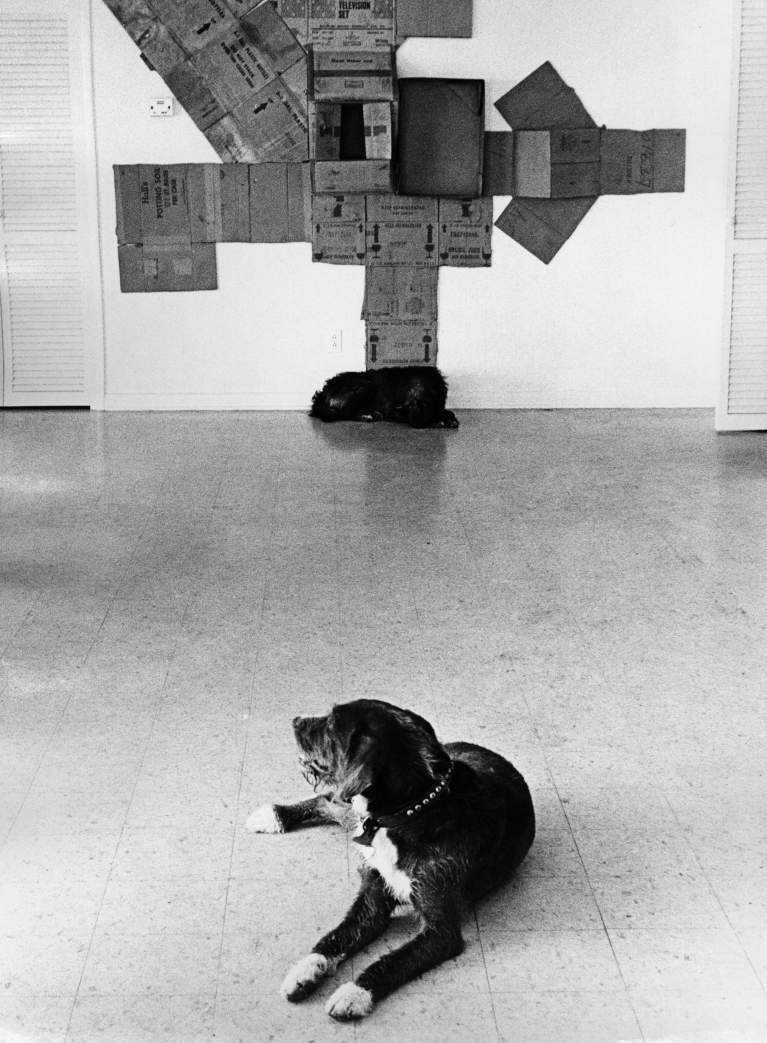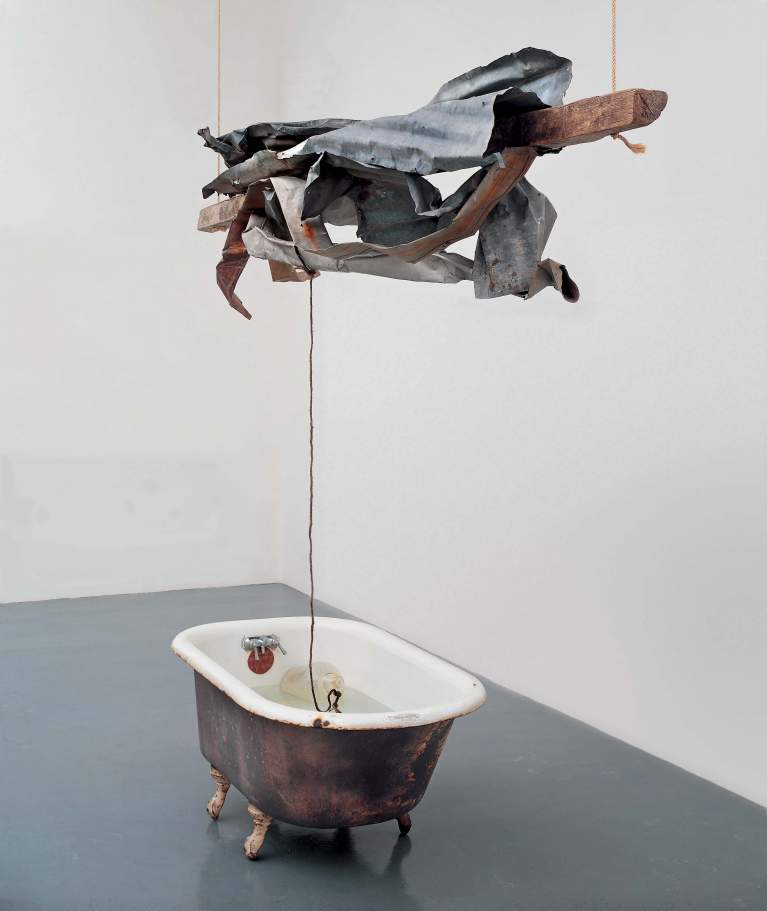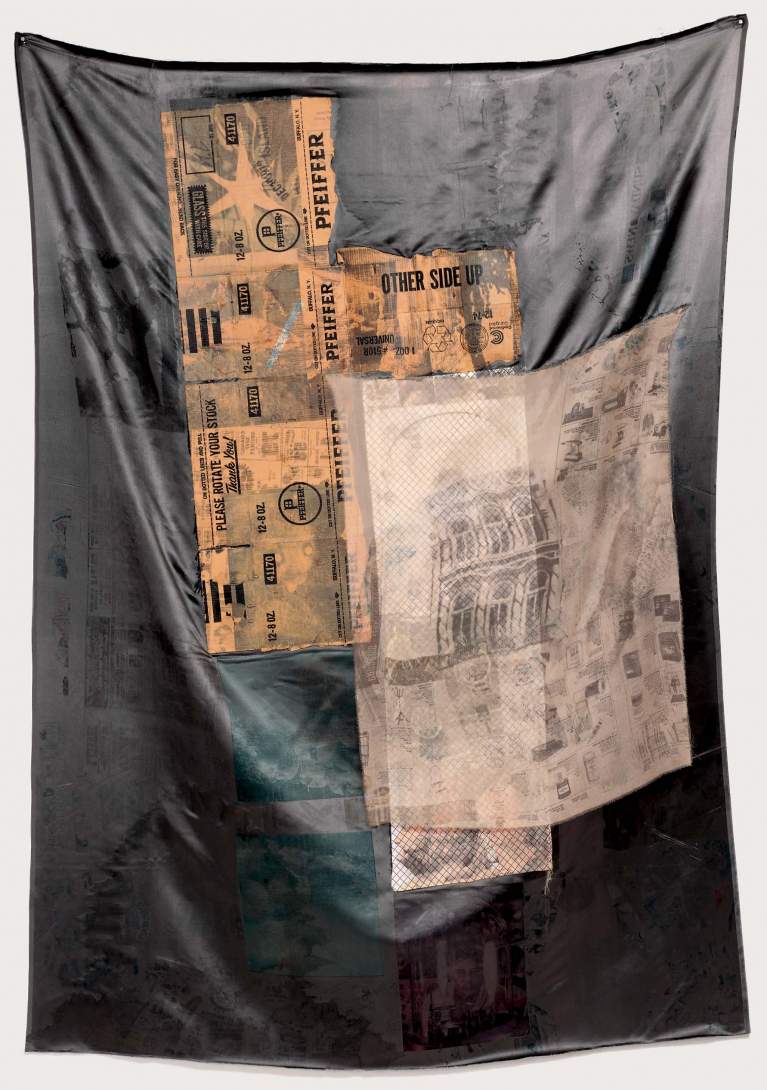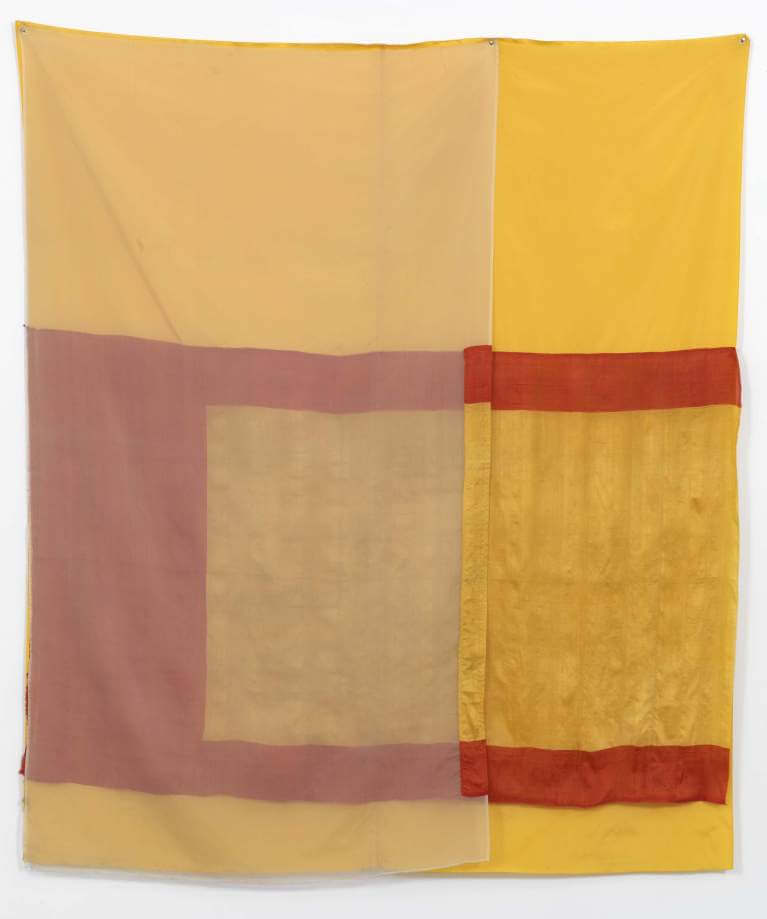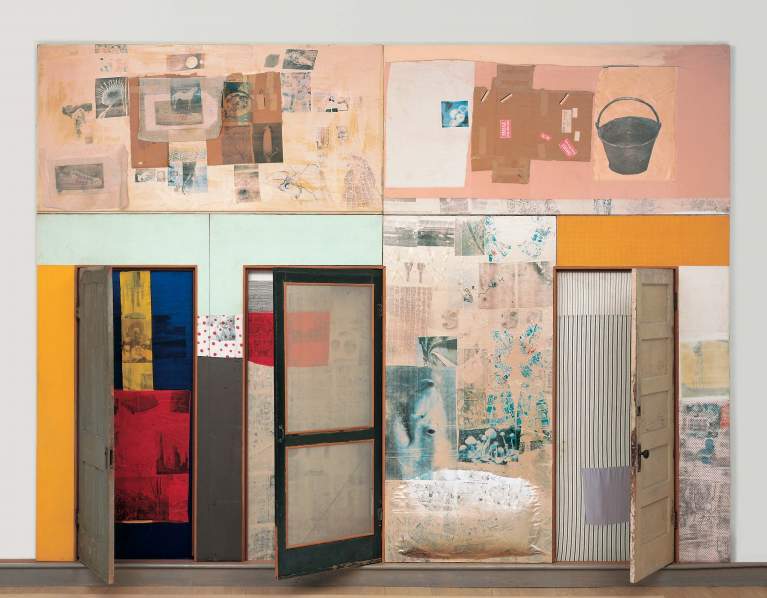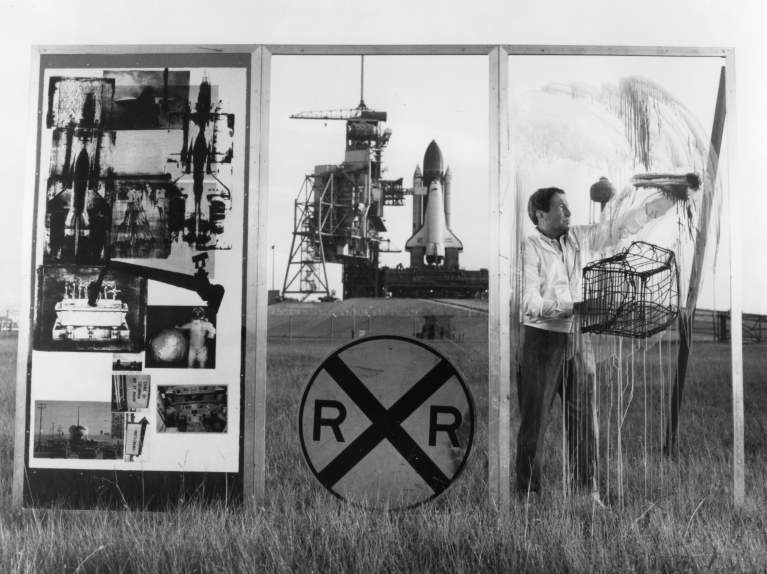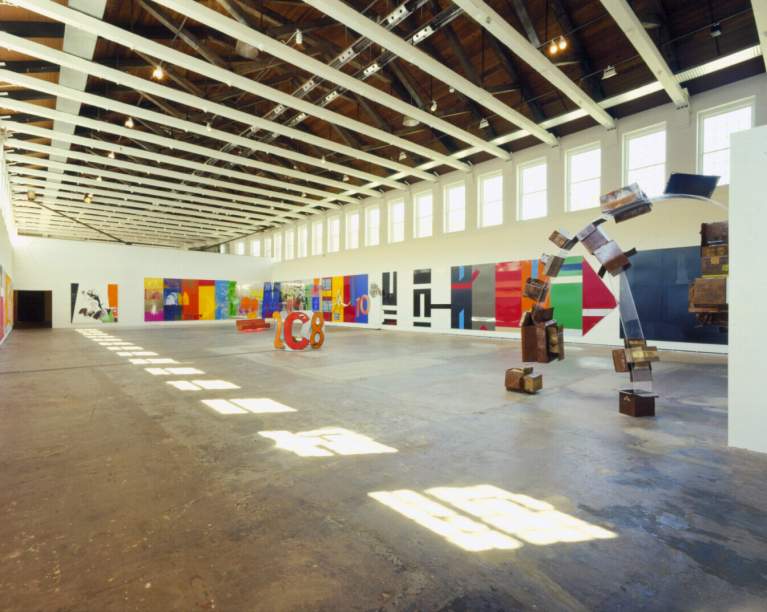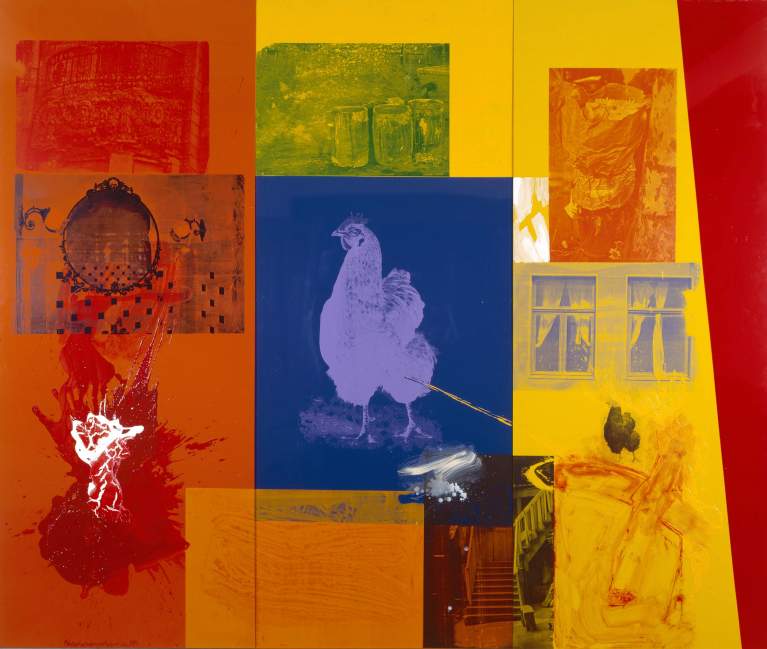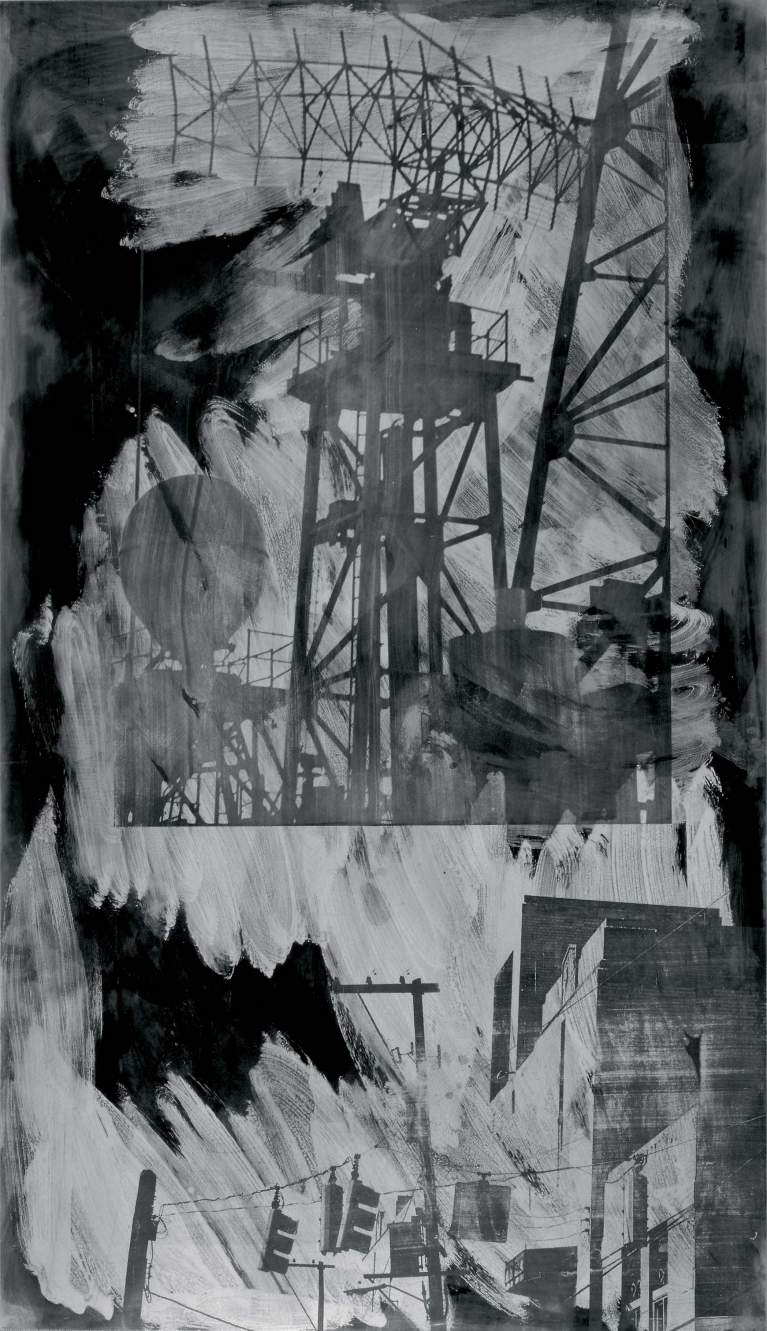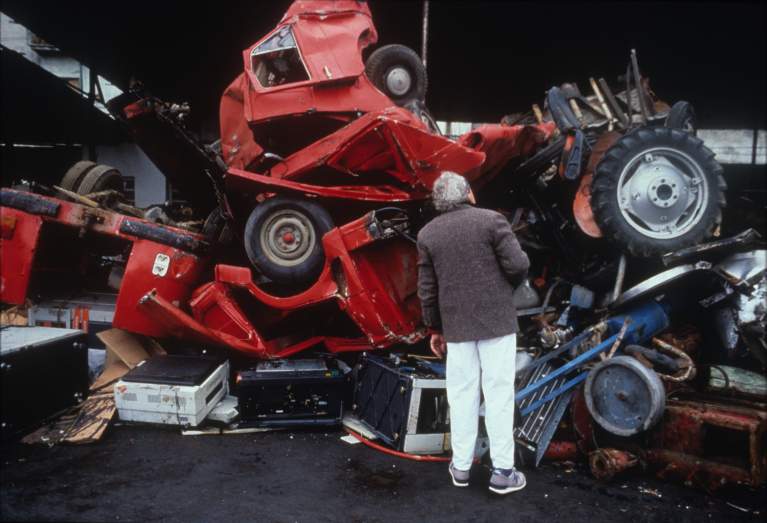
National Spinning / Red / Spring (Cardboard), 1971
Mid-Career, 1970s–1980s
With his move in 1970 from New York to Captiva Island, off the Gulf Coast of Florida, Rauschenberg cleared his palette. Retreating from urban imagery, he now favored a more abstract idiom and the use of natural fibers, such as fabric and paper. The Cardboards (1971–72) and the Venetians (1972–73) reveal his fascination with the inherent color, texture, and history of found materials. The beautiful and disparate effects of fabrics, ranging from cotton to satin, are explored in the Hoarfrosts (1974–76) and Jammers (1975–76). Collaborations at paper mills in France and India resulted in works where paper pulp was elevated to an art form.
A mid-career retrospective was mounted in 1976 by the National Collection of Fine Arts [now the Smithsonia Museum of American Art], Smithsonian Institution, Washington, D.C., when Rauschenberg was selected to honor the American Bicentennial. Having the opportunity to reexamine his early work, Rauschenberg returned to past concerns. His Spreads (1975–83) and Scales (1977–81) incorporate transferred and screened images as well as assemblage, sometimes in room-scale installations.
During the 1980s, Rauschenberg undertook two long-term projects. The first, The ¼ Mile or 2 Furlong Piece, was begun in 1981, and completed in 1998. This multi-part work consists of 191 components and spans more than a quarter mile. Retrospective in character, this piece is replete with references to his life and art.
The second project—Rauschenberg Overseas Culture Interchange (ROCI)—was the most tangible expression of Rauschenberg’s belief in the power of art and artistic collaboration to bring about social change on an international level. Traveling around the world for ROCI, Rauschenberg’s exploration of diverse cultures and local art-making practices gave rise to an extraordinarily diverse body of work. The catalyst for the metal painting and sculpture series was ROCI CHILE, where he painted and screened on copper in 1985. Over the next decade, Rauschenberg explored the use of metal as a support for paint, tarnishes, enamel, and screenprinted images in several subsequent series, such as Urban Bourbons (1988–96) and Night Shades (1991). The Gluts, begun in 1986, are made from scrap metal objects, including gas-station signs and automobile parts, which often mask the original identities when transformed into wall and freestanding sculptures.

